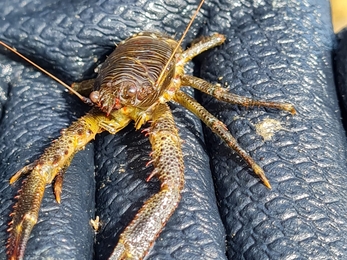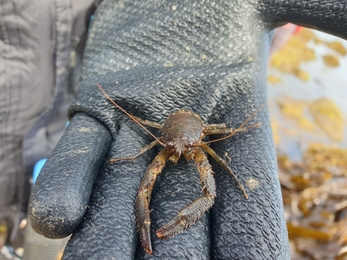The shore visited this month were Rhoscolyn (Glannau Rhoscolyn SSSI), Penmaenmawr (close to Liverpool bay SPA) and Porth dinllaen (Porth dinllaen i Borth Pistyll SSSI).
Our Shoresearch surveys are ideally building numbers of volunteers local to a hub area. Building knowledge throughout, the data gleaned should be helpful for monitoring our intertidal protected areas. We’d like volunteers to visit shores local to them and it’s often a welcome insight into somewhere they thought they knew well.
"I come off the bridge and I only ever turn left….. so I thought there was hardly anything on it!" - Janine Yarwood of her local patch.














